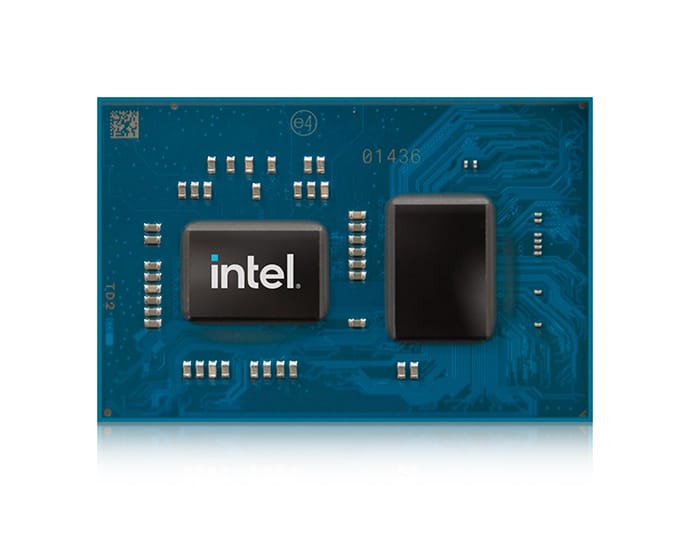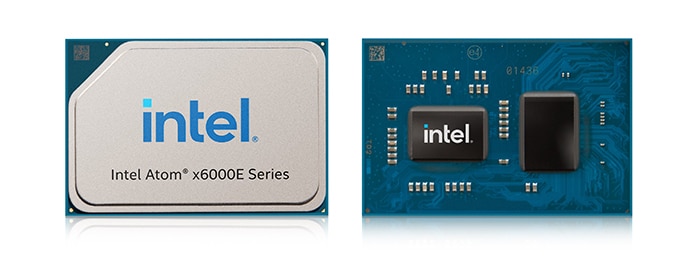Today at the intel Industrial Summit 2020, the company wanted to highlight some of its products and how it would tackle the rapidly evolving world of internet of things (IoT). This was a bit of a mixture of new and older products that can now be leveraged for AI, security, functional safety, and real-time capabilities, all of which are used in IoT and edge devices. The Products include the 11th Gen Intel Core processors, Intel Atom x6000E series, and Intel Pentium and Celeron N and J series.
Today at the intel Industrial Summit 2020, the company wanted to highlight some of its products and how it would tackle the rapidly evolving world of internet of things (IoT). This was a bit of a mixture of new and older products that can now be leveraged for AI, security, functional safety, and real-time capabilities, all of which are used in IoT and edge devices. The Products include the 11th Gen Intel Core processors, Intel Atom x6000E series, and Intel Pentium and Celeron N and J series.

Processing data at the edge and the addition of IoT devices has exploded in the last few years. There is no sign of slowing down, in fact in the next few years a majority of all enterprises will process data at the edge according to IDC. The processing is going to have several needs moving forward and Intel is addressing them now with the slew of products aimed at these use cases. At the same time Intel is working with its customers to address edge complexity, total cost of ownership and a range of environmental condition unique to edge and IoT devices.
First up is Intel’s already announced 11th Gen Core processors. They have been enhanced specifically for essential IoT applications that require high-speed processing, computer vision and low-latency deterministic computing, according to the company. On the performance side of things, Intel states the processors can hit up to a 23% performance gain in single-thread performance, a 19% gain in multithread performance, and up to a 2.95x performance gain in graphics gen on gen. For video, including surveillance and production, new dual-video decode boxes allow the processor to ingest up to 40 simultaneous video streams at 1080p 30 frames per second and output up to four channels of 4K or two channels of 8K video. And to top it all off, the CPUs leverage AI-inferencing algorithms that are able to run on up to 96 graphic execution units (INT8) or run on the CPU with vector neural network instructions (VNNI) built in.
Use cases for the Intel 11th Gen Core processors at the edge include:
- Industrial sector: Mission-critical control systems (PLC, robotics, etc.), industrial PCs and human-machine interfaces.
- Retail, banking and hospitality: Intelligent, immersive digital signage, interactive kiosks and automated checkout.
- Healthcare: Next-generation medical imaging devices with high-resolution displays and AI-powered diagnostics.
- Smart city: Smart network video recorders with onboard AI inferencing and analytics.
On to the Intel Atom x6000E series as well as the Intel Pentium and Celeron N and J Series Processors. The above processors are specifically enhanced for IoT. These processors are built around delivering enhanced real-time performance and efficiency; up to 2 times better 3D graphics; a dedicated real-time offload engine; Intel Programmable Services Engine, which supports out-of-band and in-band remote device management; enhanced I/O and storage options; and integrated 2.5GbE time-sensitive networking. They can also support 4Kp60 resolution on up to three displays.
Use cases for Intel Atom x6000E, Intel Pentium, and Celeron N and J Series Processors include:
- Industrial: Real-time control systems and devices that meet functional safety requirements for industrial robots and for chemical, oil field and energy grid-control applications.
- Transportation: Vehicle controls, fleet monitoring and management systems that synchronize inputs from multiple sensors and direct actions in semiautonomous buses, trains, ships and trucks.
- Healthcare: Medical displays, carts, service robots, entry-level ultrasound machines, gateways and kiosks that require AI and computer vision with reduced energy consumption.
- Retail and hospitality: Fixed and mobile point-of-sale systems for retail and quick service restaurant with high-resolution graphics.
Engage with StorageReview
Newsletter | YouTube | Podcast iTunes/Spotify | Instagram | Twitter | Facebook | RSS Feed

